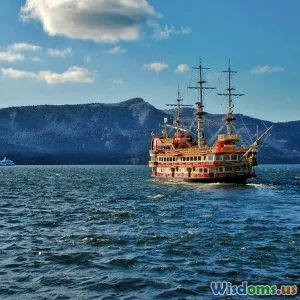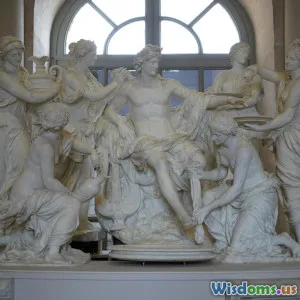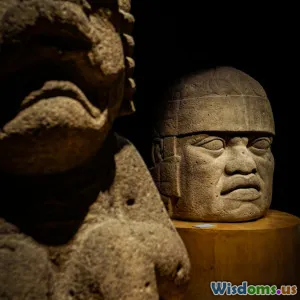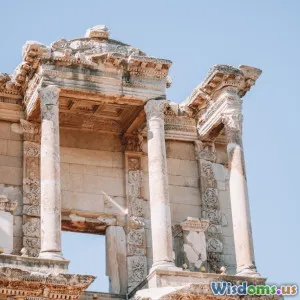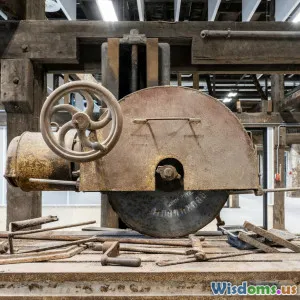
The Intrigue of Ancient Trade Routes
6 min read Explore the fascinating world of ancient trade routes and their impact on civilizations and archaeology. (0 Reviews)
The Intrigue of Ancient Trade Routes
Trade routes were more than mere pathways for exchanging goods; they were vital arteries of ancient civilizations, conduits of culture, technology, and ideas that shaped the world as we know it. From the vast expanse of the Silk Road to the maritime Spice Route, these corridors not only facilitated commerce but also led to archaeological discoveries that fascinate historians and researchers.
Introduction: The Fascination of Ancient Trade Networks
Imagine a time before airplanes, trains, or even reliable ships; yet, civilizations thousands of years ago managed to connect vast regions of the world. These connections were built on trade routes — complex networks that transformed isolated tribes into thriving cities. The intrigue lies not only in what was traded but how these routes influenced societal development, diplomacy, and cultural syntheses.
The Silk Road: A Sprawling Network of Culture and Commerce
Perhaps the most iconic of ancient trade routes, the Silk Road stretched from China across Central Asia to Europe. Not merely a single route but a web of interconnected paths, it enabled the exchange of silk, spices, precious metals, and ideas.
Historical Impact
Established during the Han Dynasty around 130 BCE, the Silk Road facilitated the export of Chinese silk to the Roman Empire, a luxury coveted across continents. This exchange wasn’t solely material; Buddhism spread from India to East Asia through these routes, showcasing the non-material exchanges of religion and philosophy.
Archaeological Insights
Excavations along the Silk Road have uncovered caravanserais—ancient inns that hosted merchants—which divulge evidence about trade practices and multicultural interactions. For example, the Mogao Caves near Dunhuang preserve priceless Buddhist art that documents the spiritual and cultural exchange.
Maritime Spice Routes: Navigating the World’s Oceans
While overland routes like the Silk Road are often spotlighted, maritime trade routes governed the exchange of spices and luxury goods between Asia, the Middle East, and Africa.
Spice Trade’s Importance
Spices such as cinnamon, pepper, and cloves were not just culinary indulgences but important for medicine and preservation, thereby compelling traders to take perilous sea voyages. Arab sailors and later European explorers like Vasco da Gama charted these routes, initiating a new age of global interaction.
Evidence from Shipwrecks
Archaeological discoveries such as the Belitung shipwreck off Indonesia revealed a 9th-century Arabian dhow laden with Tang dynasty ceramics, illuminating cross-cultural trade and technology transfer.
The Amber Road: Europe’s Ancient Trade Pathway
Stretching from the Baltic coast to the Mediterranean, the Amber Road was pivotal for the movement of amber, considered 'the gold of the north.'
Economic and Social Role
Amber reached the heart of ancient Greece and Rome, fashioned into jewelry and religious artifacts. This movement not only fostered economic prosperity but also established communication between tribal Europe and Mediterranean civilizations.
Archaeological Legacy
Findings along the route include amber workshops and burial sites, providing clues about the social status and craftsmanship skills prevalent in prehistoric Europe.
Trade Routes as Catalysts for Technological and Cultural Exchange
Beyond tangible goods, routes enabled the spread of innovations like papermaking, gunpowder, and the compass from China to Europe; likewise, weaving together global mythologies and shared artistic styles.
Real-World Insight: The Spread of Writing
The Proto-Sinaitic script, believed to be the precursor to many alphabets, likely diffused via trade contacts between Egyptians and Semitic peoples, emphasizing how commerce seeded fundamental intellectual developments.
Conclusion: Unraveling the Legacy of Ancient Trade
Ancient trade routes invite us to rethink connectivity in historical contexts. Their intrigue stems from how they delivered wealth and fostered encounters across cultures, spurring civilization growth. Today's archaeological revelations continually rewrite our understanding of these vibrant exchanges.
As modern explorers, historians, or casual readers, delving into the mystery of ancient trade routes enriches our appreciation for human ingenuity and the intertwined fabric of global history. With every artifact unearthed or manuscript studied, we step closer to understanding the pulse of a truly connected ancient world.
References
- Hansen, Valerie. The Silk Road: A New History. Oxford University Press, 2012.
- Kim, Sungsoo. "Maritime Spice Routes and Archaeology." Journal of Asian Maritime Studies, vol. 7, no. 2, 2019.
- Greenfield, Ben. "Mapping the Amber Road." European Archaeology Review, 2017.
Understanding the historical tapestry woven by these ancient trade routes not only satisfies our curiosity but also reveals the timeless nature of human connection and commerce.
Rate the Post
User Reviews
Popular Posts










